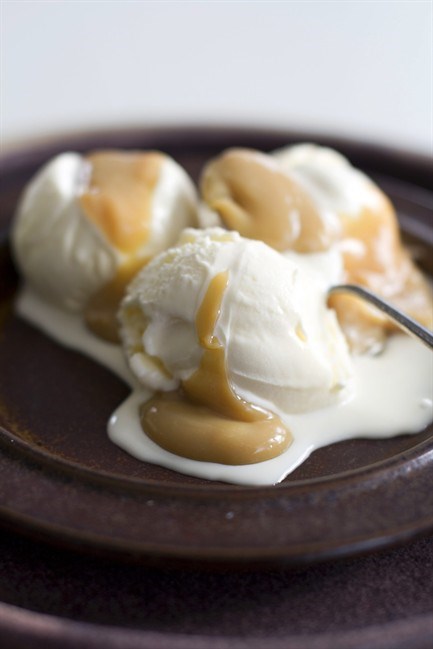My relationship with my pressure cooker has been a rocky one. I blame the way we met.
Back more than a decade ago, I followed a macrobiotic diet, a way of eating that is mostly vegan and focused very much on the purported energies in foods and how those energies benefit — or not — our bodies. There's a whole lot of brown rice and beans going on there, which is why the pressure cooker is a popular tool for those following the diet.
By trapping the steam produced during cooking, pressure cookers allow you to cook beyond the boiling point of 212 F, usually closer to 250 F. This means that foods that typically need long, slow simmers can be cooked quickly and with often surprisingly good results.
But I broke up with my pressure cooker after the bass incident. And I wish I could say this story was related to music. Some unusual dish I was supposed to prepare to ensure my good health involved pressure cooking an entire bass. Head. Fins. Scales. Guts. You name it. Into the pot it went, for at least several hours.
The result was a thick, porridge-like brown goo. That's right — pressure cooked brown fish goo. It smelled as good as you imagine.
Which is why I set my pressure cooker aside for many years. But recently these simple pots have curried favour with all manner of chefs who appreciate them for their speed and ability to render tough cuts of meat deliciously tender. And my experiments — mostly with stews and briskets, but also some vegetable purees — have mostly been wonderful successes.
But the recipe that pushed me to fall back in love with the pressure cooked was dulce de leche. This South American treat is basically caramelized sweetened milk. It's become a popular flavour in baked goods, ice creams and other sweets. But it's rather laborious to make.
A shortcut method that's been around for years involves slowly simmering an unopened can of sweetened condensed milk in a large pot of water. This several-hour approach slowly caramelizes and thickens the contents of the can, resulting in outrageously rich dulce de leche with the consistency of peanut butter.
There also is the possibility — albeit a remote one — that the can could explode (if the pan ran dry). Still, enough people have used this method over the years (to the legal angst of the canned condensed milk companies) that most cans of condensed milk now carry warnings urging you not to do that.
But with the pressure cooker, you can more safely and more quickly get the same results. I've described my method below, which is ridiculously simple.
So what do you do with the dulce de leche once you've made it? Assuming you get beyond just eating it by the spoon, try it over ice cream, spread in a peanut butter sandwich (instead of jam), spread over cream cheese on a bagel, dip pretzels in it, spread it over a cooked plain pizza crust, then sprinkle with dried fruit and coconut... And so on.
___
PRESSURE COOKER DULCE DE LECHE
For a dulce de leche with a more intense caramel flavour, you can double the cooking time in the pressure cooker to 40 minutes. The rest of the recipe remains the same.
Start to finish: 30 minutes, plus cooling
Makes a 14-ounce can
14-ounce can sweetened condensed milk
Set a metal steamer basket in the bottom of a large pressure cooker. Fill the pressure cooker with water up to its max fill line.
Remove the label from the can of sweetened condensed milk. Set the can on its side in the water on top of the steamer basket. The can must be completely submerged and not be in contact with the sides or bottom of the cooker (the steamer basket should prevent this).
Clamp on the pressure cooker's lid according to manufacturer's directions. Bring up to pressure over medium-high heat. Once the cooker has reached pressure, reduce heat to just maintain pressure. Most pressure cookers will hiss lightly at this stage, but refer to your model's directions.
Cook for 20 minutes.
Transfer the entire pressure cooker to the sink and turn on cold water to run over it and cool the cooker. After 5 minutes, the pressure should be released and the cooker should be cool enough to open. If the cooker resists opening, this means the pressure is still too high inside to open. Continue running cold water over it.
Use tongs to remove the can from the water (it will still be quite hot). You can either let it stand at room temperature and cool on its own or, for faster cooling, continue running just the can under cool water for another 5 to 10 minutes. Either way, the unopened can should be stored at room temperature as you would any canned good. Once opened, refrigerate for up to a week.
Nutrition information per 2 tablespoons: 130 calories; 30 calories from fat; 3 g fat (2 g saturated; 0 g trans fats); 10 mg cholesterol; 22 g carbohydrate; 0 g fiber; 22 g sugar; 3 g protein; 35 mg sodium.
___
J.M. Hirsch is the food editor for The Associated Press. He blogs at http://www.LunchBoxBlues.com and tweets at http://twitter.com/JM_Hirsch



